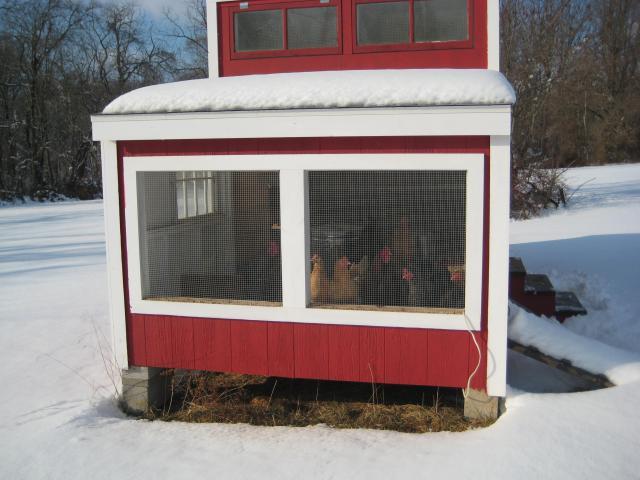I have an insulated coop with double pane windows. If the outside temperature is 20 F, inside is 21 F, same humidity level inside and outside. Why? Because 3 out of 4 windows plus the poop door are always opened. I would lower the window depending on which direction the wind is blowing. The chickens are fine inside; so far, no frost bite. If and when there is a blizzard condition, then I will close the window on the prevailing side of the wind, but there are still plenty of vents on each wall. An insulated coop is great...in the summer to keep the inside cool. During the winter, my girls are outside in the run all day long except when laying eggs. As long as they are shield from the wind, they don't seem to mind the cold or the snow.
Btw, I used an infrared thermometer to check their body temperature at night, they were a balmy 99 F, no matter how cold it was outside.
Btw, I used an infrared thermometer to check their body temperature at night, they were a balmy 99 F, no matter how cold it was outside.


